Coastal Creeks
The FlyFish Journal 2024
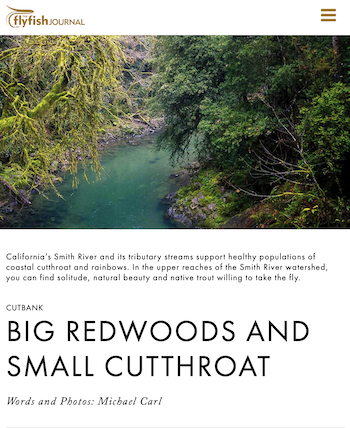 Searching for a place to fish, I found refuge from the summer heat along the Redwood Coast. More importantly, I realized how an old-growth forest is the perfect home for cold-water loving fish.
Searching for a place to fish, I found refuge from the summer heat along the Redwood Coast. More importantly, I realized how an old-growth forest is the perfect home for cold-water loving fish.
Read my story in Volume 15, Issue 4 of The FlyFish Journal.
In Return
Salmon complete a connection between land and sea when they die. Salmon transport nutrients from the ocean such as carbon, phosphorous, and nitrogen to the headwaters where they spawn. These elements replenish streambeds, spur algal growth, and fortify aquatic and riparian foodwebs from aquatic insects to wildlife. In some cases, the headwaters where salmon spawn can extend 30 miles from the ocean and would not otherwise contain these essential nutrients without these creatures returning to spawn.
Coastal Creeks and Redwood Forests - Home to Coho and Steelhead
"Life flows both ways. The forest raises the salmon, but the salmon also raise the forest. This mutual dependence is the very definition of community, and in the end, the heart of the matter." -- Richard Manning
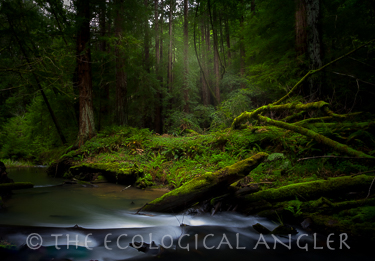
Steelhead and coho salmon are the "canary in the coalmine" for California's coastal watersheds. These fish are indictor species for the health of the redwood forests.
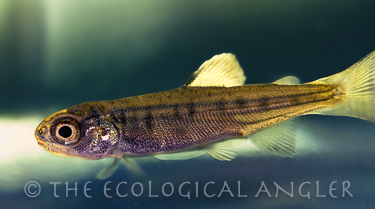
They rely upon the entire ecosystem; the estuary for acclimation to saltwater; main stream channels for migration; and their natal tributary streams for spawning and rearing.
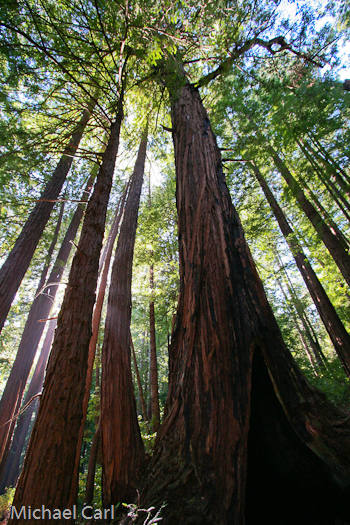
Redwood forests provide ideal salmon habitat, providing woody debris to protect young salmon in the creeks and keeping them shaded and cool.
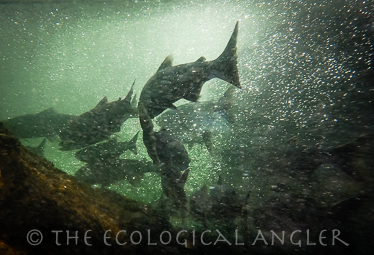
When adult salmon return to spawn in the very same creek, their spawned out body provides a nutrient rich food for other fish, birds, insects, and even the forest. These salmon provide a rich fertilizer to the entire redwood forest ecosystem. Studies have found that trees along salmon streams tend to grow faster and bigger than similar trees along streams without salmon.
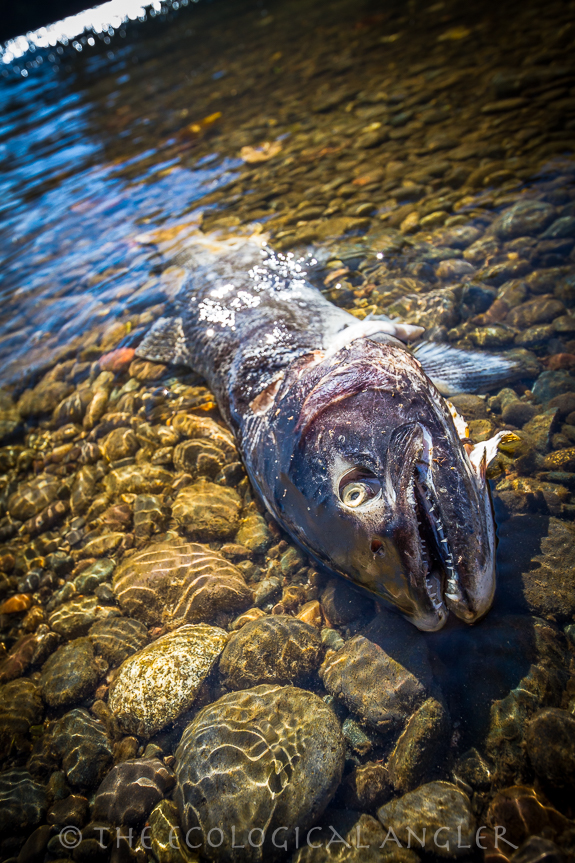
After spawning, salmon decompose keeping forest soils fertile. Forests continuously lose soil and nutrients to the water. Migrating salmon reverse this out-flow by eating fish and krill at sea and bringing nutrient-rich body mass back into the forest.
Near salmon-rich coastal rivers and creeks, over half of the nitrogen in shrubs and trees originates in the open ocean. And the salmon signature isotope can be found as far inland as the Rocky Mountains - carryed by large and small animals throughout the food chain.
